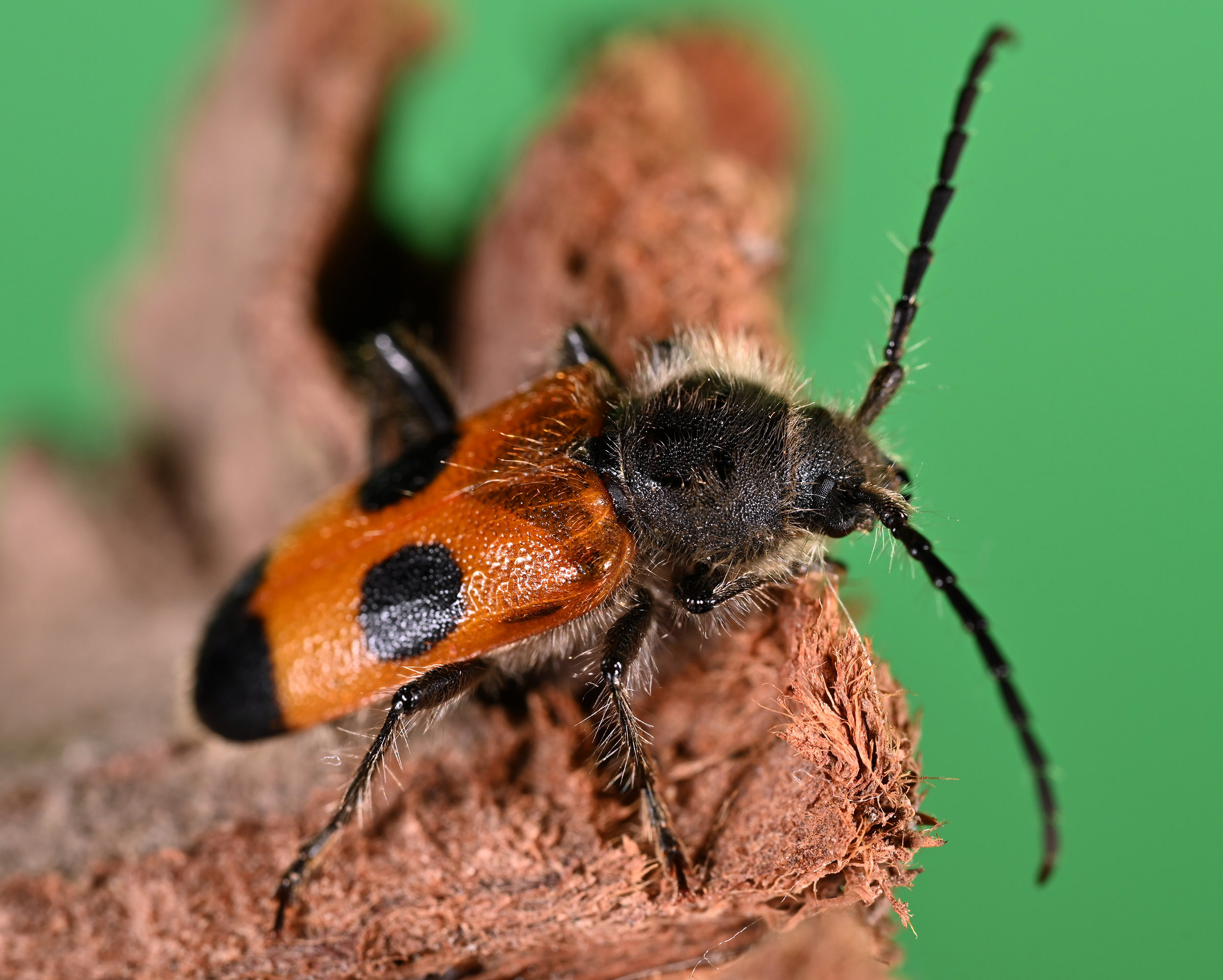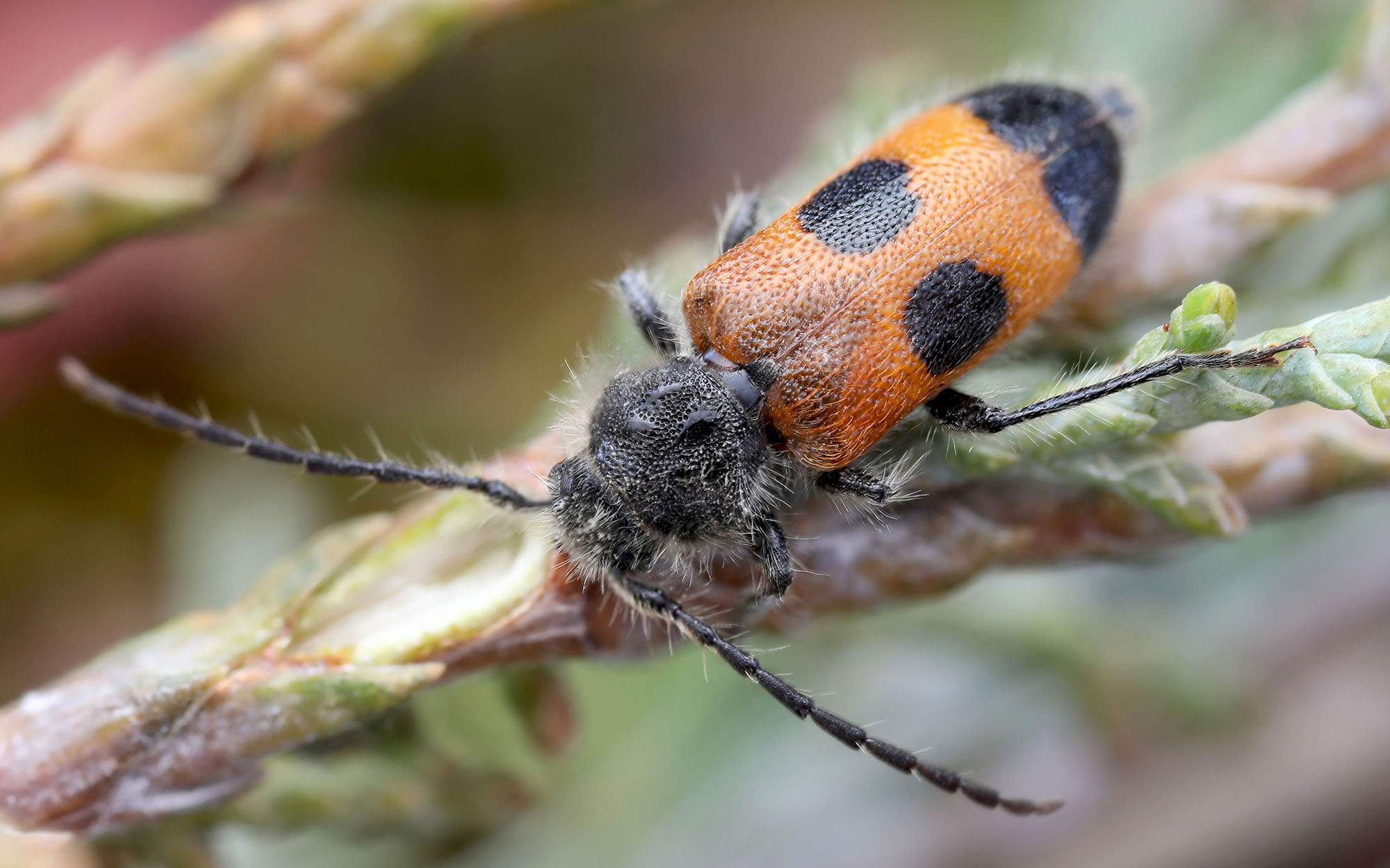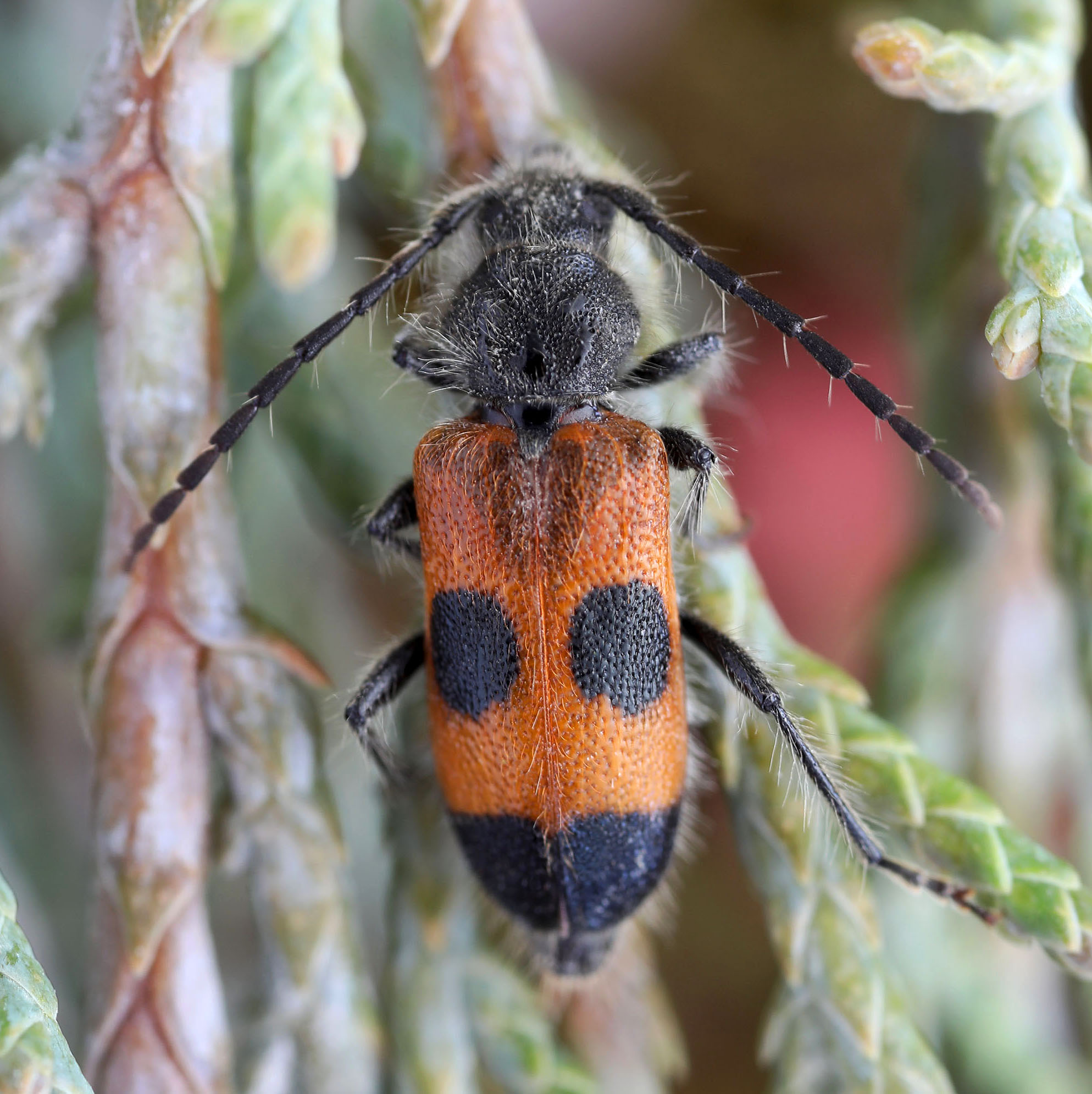ssp. russicus (Fabricius, 1776)
Subfamilia: CERAMBYCINAE / Tribus: CALLIDIINI

[Photo © Michal Hoskovec]
Semanotus russicus russicus, distributed in Europe (South-East and Central Europe), Near East, Asia Minor, and Transcaucasia, is in Central Europe ecologically associated with the preserved steppe/pasture juniper stands (Juniperus communis). Interestingly, this species adapted in the urban environment (parks, gardens, cemeteries) to new host trees of the Cupressaceae family (e.g. Thuja occidentalis, decorative introduced Juniperus species) during the first decade of the 21st century. This in Central Europe rare and endangered taxon was from Czechia (Prague-Podolí) first reported in 2017 [▿], so its northernmost and westernmost occurrence borders were shifted from Slovakia and Austria to Central Bohemia. According to as yet unpublished data, the species spreads along the valleys of the Vltava and Berounka rivers further into Central/West Bohemia, where (if occurs in natural habitats) also develops in the original host tree - Juniperus communis.
S. russicus larvae develop under bark of weakened, dying or freshly dead branches and trunks of the host trees. The species also infests the lower parts of the trunks, so the larval development then also takes place under the bark of the underground part and the roots. The larvae create relatively wide (7-10 mm) with frass clogged galleries in the sapwood and bark. The larvae pupate in hook-shaped pupal cells in the wood in autumn, the adults overwinter and leave the host tree on the first warm spring days (already in March). Crepuscular/nocturnal adults, which are among the first active spring longhorn beetles in nature, do not visit flowers and can be found on the host trees [❖].
S. russicus has been described from "Russia" as Callidium russicum by Johann Christian Fabricius in 1776 [✧].
Body length: 7 - 18 mm Life cycle: 1 - 2 years Adults in: March - June Host plant: conifers from Cupressaceae family (Juniperus spp., Thuja spp.) Distribution: Albania, Azerbaijan, Armenia, Austria, Bulgaria, Croatia, Czechia, Georgia, Greece, Hungary, Italy, Romania, Slovakia, Russia, Ukraine, Serbia & Montenegro, Jordan, Lebanon, Syria, Turkey
The depicted beetles were reared from larvae found in a dying Thuja occidentalis in: (MH) - Praha-Řepy (Prague, Central Bohemia, Czechia) in March 2023; (DR) - Kobylisy Cemetery (Prague, Central Bohemia, Czechia) in February 2020.Collected by Michal Hoskovec and Daniel Rydzi
[▿]
Cížek L.:
Faunistic records from the Czech Republic – 435 (Coleoptera: Cerambycidae, Buprestidae).
Klapalekiana 53: 389–390, 2017. [download]
[❖]
Sláma M.E.F.:
Tesaříkovití – Cerambycidae České republiky a Slovenské republiky / Cerambycidae of the Czech Republic and Slovak Republic.
Milan Sláma private printing, Krhanice, 383pp [pages 143-144], 1998 [ISBN: 80-238-2627-1]. [download]
Hron J. and Hanousek Z.:
Příspěvek k poznání bionomie tesaříků Semanotus undatus (L.) a Semanotus russicus (F.) (Coleoptera, Cerambycidae) / Contribution to the knowledge of bionomy of longhorn beetles Semanotus undatus (L.) and Semanotus russicus (F.) (Coleoptera, Cerambycidae).
Zprávy Československé společnosti entomologické ČSAV 22: 73-80, 1986. [download]
[✧]
Fabricius J.C.:
Genera insectorum eorumque characteres naturales secundum numerum, figuram, situm et proportionem omnium partium oris adiecta mantissa specierum nuper detectarum.
Chilonii, Michae Friedrich Bartsch: i-xv + 310pp, 1776. [download]

[Photo © Daniel Rydzi]

[Photo © Daniel Rydzi]
| Subfamilia | Cerambycinae Latreille, 1802 |
| Tribus | Callidiini Mulsant, 1839 |
| Genus | Semanotus Mulsant, 18393 |
| Species | Semanotus russicus (Fabricius, 1776) |
| Species | Semanotus russicus russicus (Fabricius, 1776) |
